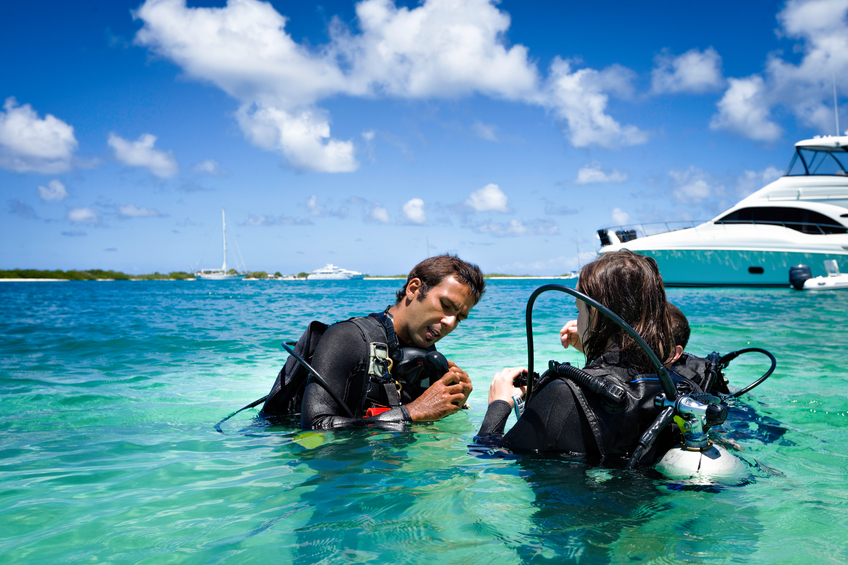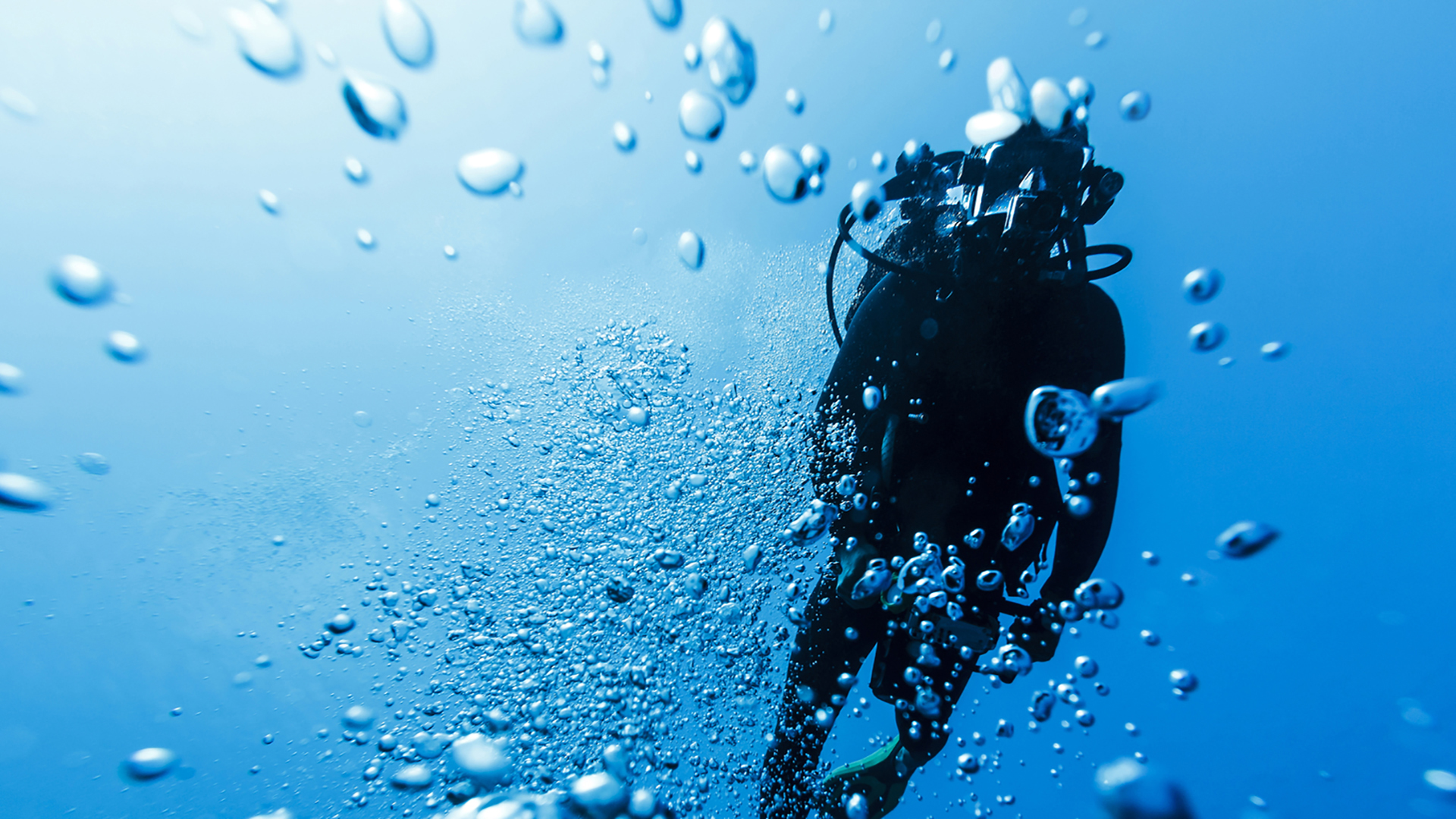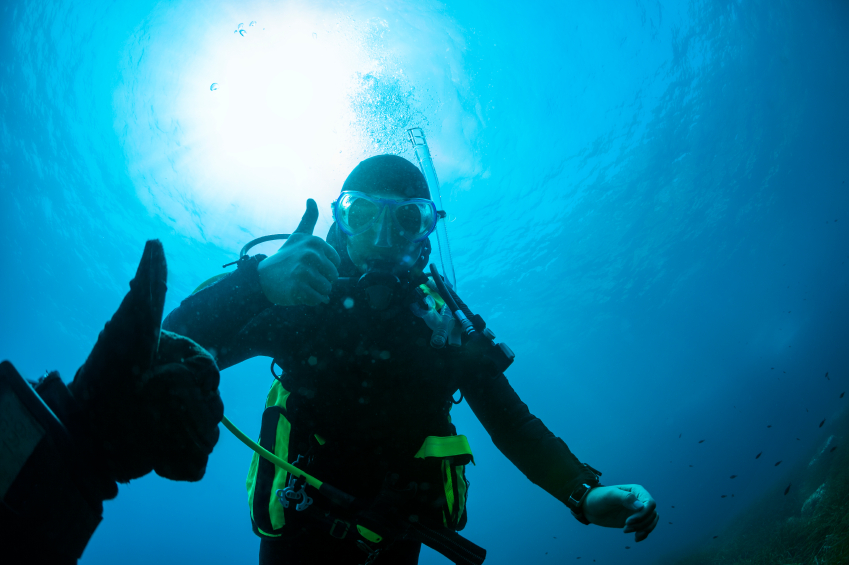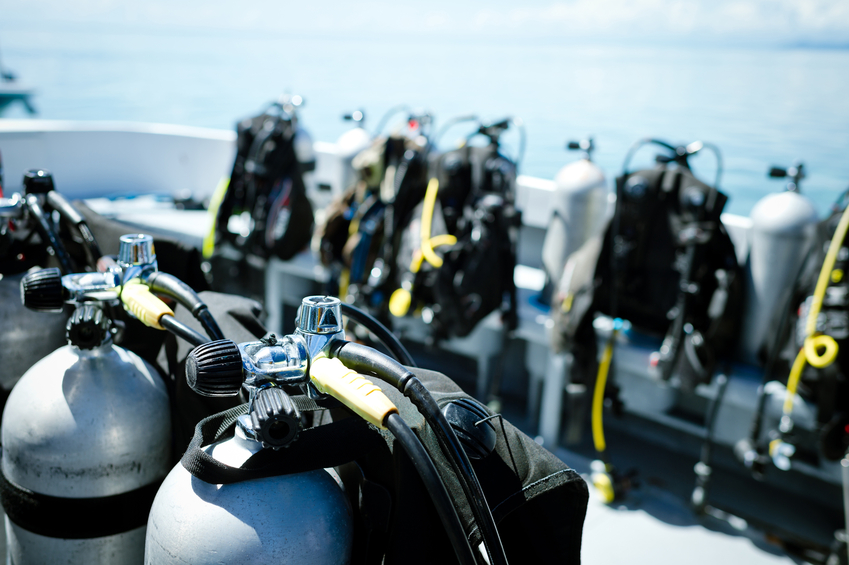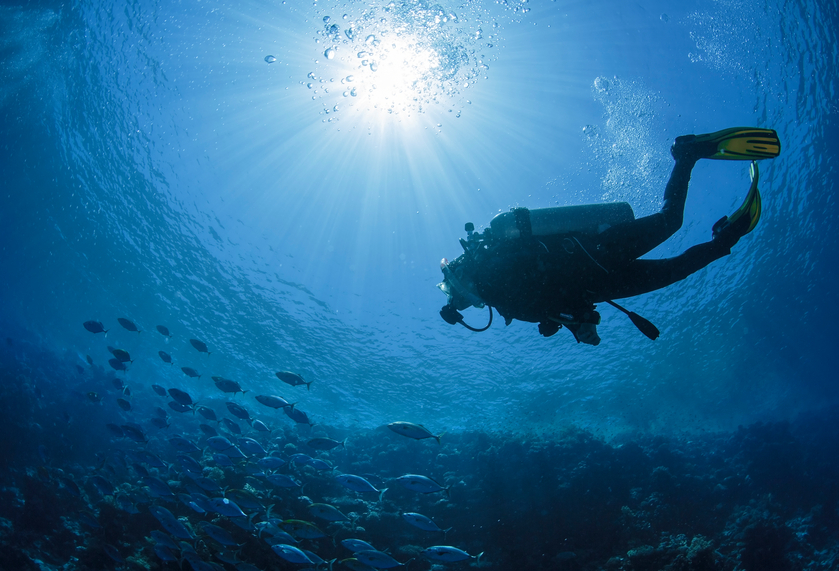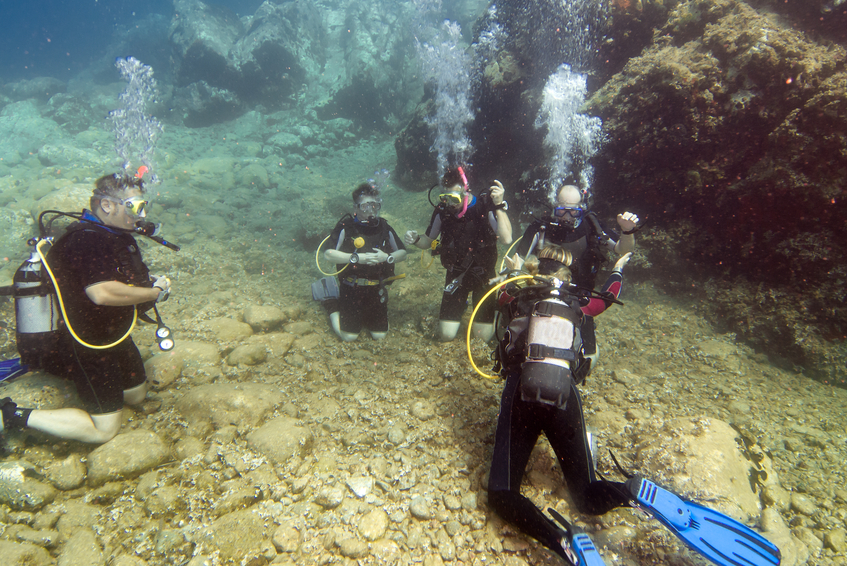Finding the right diving equipment and scuba diving gear is essential to having a good and safe diving experience.
Whether you’re a beginner scuba diver or an experienced diver, everyone needs to have the same high quality equipment and the knowledge about how to use it properly.
If you’re diving in the UK, you’ll need a different wetsuit than if you’re diving abroad, or on your gap year. If you’re wanting to cover large distances, you’ll need different fins than if you were to do a short recreational dive. Knowing the difference between the different types of equipment, will make every dive a lot easier.
Scuba Diving | What Are The Bends And How Do You Prevent Them?
Unlike surfing and hiking, diving does need a lot of specialist gear that you definitely can’t skimp on. Buy the basics first and slowly begin to move from renting to owning the more advanced and technical equipment.
Here’s our guide to scuba diving equipment, for any level of diver.
Regulator
